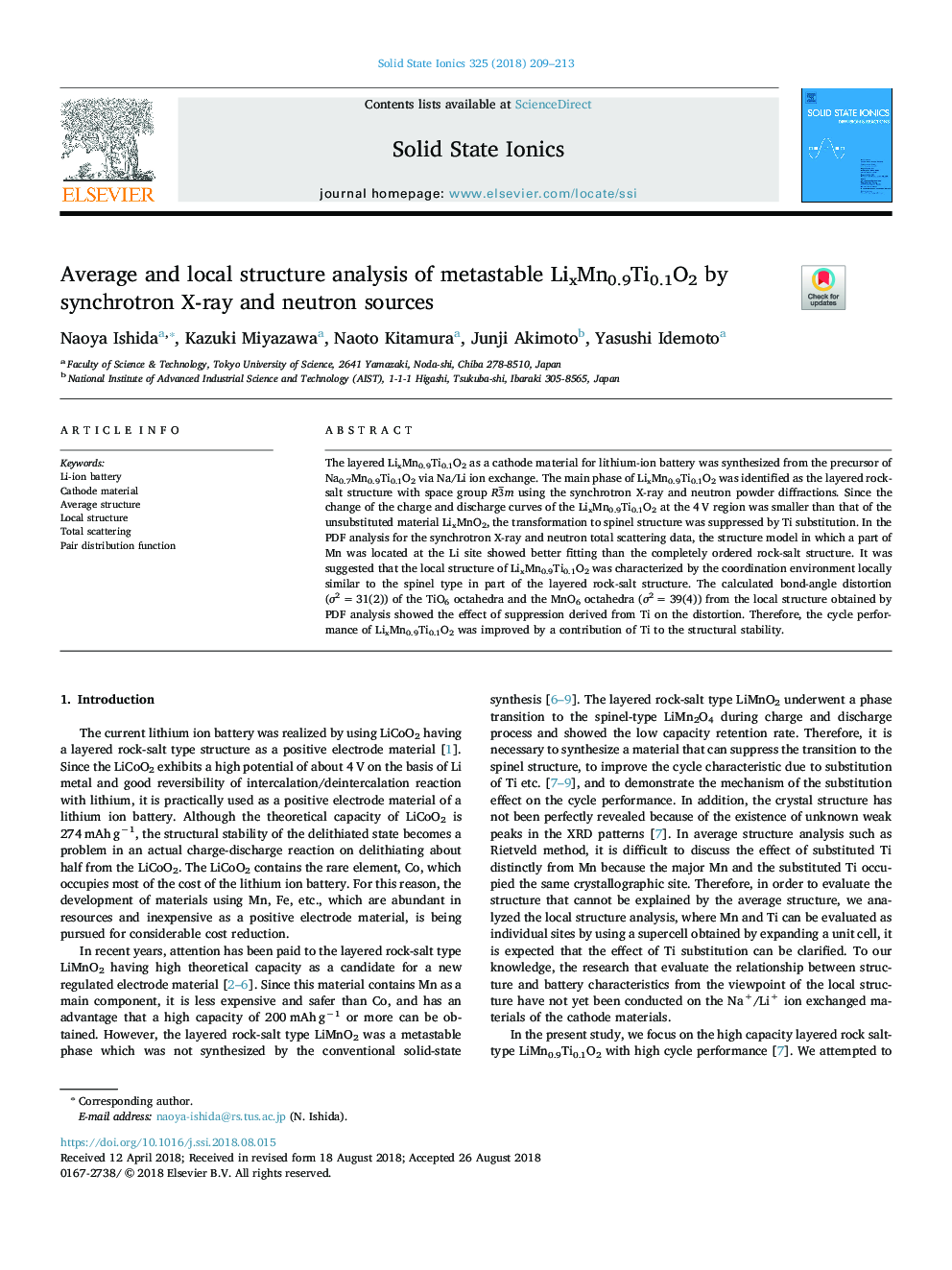| Article ID | Journal | Published Year | Pages | File Type |
|---|---|---|---|---|
| 11005953 | Solid State Ionics | 2018 | 5 Pages |
Abstract
The layered LixMn0.9Ti0.1O2 as a cathode material for lithium-ion battery was synthesized from the precursor of Na0.7Mn0.9Ti0.1O2 via Na/Li ion exchange. The main phase of LixMn0.9Ti0.1O2 was identified as the layered rock-salt structure with space group R3¯m using the synchrotron X-ray and neutron powder diffractions. Since the change of the charge and discharge curves of the LixMn0.9Ti0.1O2 at the 4â¯V region was smaller than that of the unsubstituted material LixMnO2, the transformation to spinel structure was suppressed by Ti substitution. In the PDF analysis for the synchrotron X-ray and neutron total scattering data, the structure model in which a part of Mn was located at the Li site showed better fitting than the completely ordered rock-salt structure. It was suggested that the local structure of LixMn0.9Ti0.1O2 was characterized by the coordination environment locally similar to the spinel type in part of the layered rock-salt structure. The calculated bond-angle distortion (Ï2â¯=â¯31(2)) of the TiO6 octahedra and the MnO6 octahedra (Ï2â¯=â¯39(4)) from the local structure obtained by PDF analysis showed the effect of suppression derived from Ti on the distortion. Therefore, the cycle performance of LixMn0.9Ti0.1O2 was improved by a contribution of Ti to the structural stability.
Keywords
Related Topics
Physical Sciences and Engineering
Chemistry
Electrochemistry
Authors
Naoya Ishida, Kazuki Miyazawa, Naoto Kitamura, Junji Akimoto, Yasushi Idemoto,
